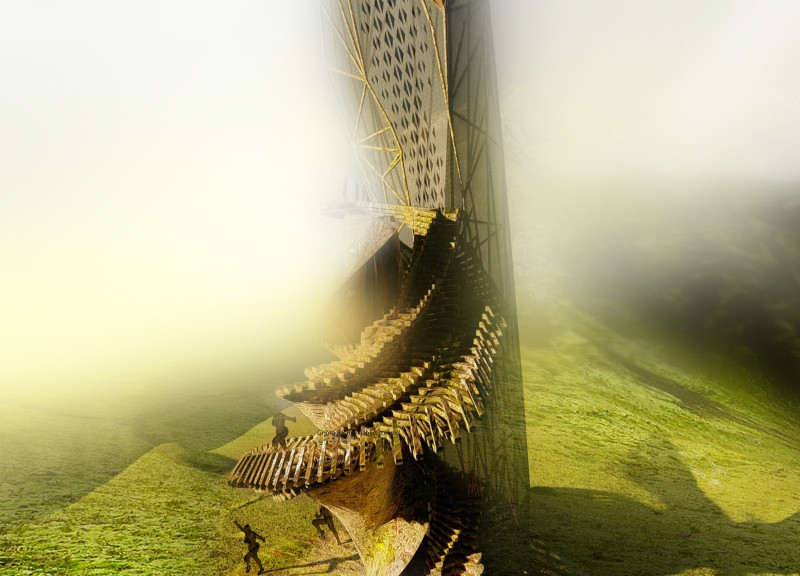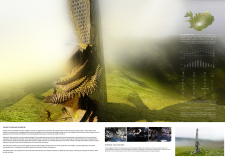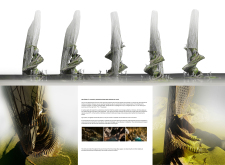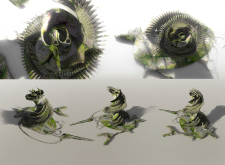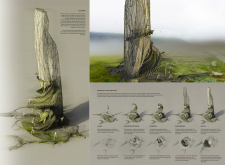5 key facts about this project
The design for the Grjótagjá region in Iceland focuses on integrating a structure into an extraordinary volcanic landscape, responding to the needs of tourists drawn to its natural beauty. The concept emphasizes vertical forms that reflect the geological features of the area, bringing elements of local culture into the architectural expression. The goal is to enhance the visitor experience while prioritizing environmental responsibility.
Design Concept
The central feature is a helical tower intended to support only its own weight. This structure draws inspiration from traditional menhirs, creating links to the area's rich folklore. It serves as an observation point, engaging visitors with the surrounding environment. As people ascend through the spiraled paths, they encounter a unique experience that connects them with the dramatic landscape.
Materials and Sustainability
Low-density plastic meshes are employed to facilitate water collection from the air through capillary action. This innovative design reduces environmental impact and is particularly suited to the local climate, capturing moisture that can be used effectively. By integrating sustainable practices, the design reflects a commitment to caring for the environment while providing functionality.
Structural Design
The tower reaches 18 meters tall and consists of layers made from wooden blocks that are precisely shaped using CNC technology. This construction method ensures structural stability while allowing for effective distribution of weight. The helical form allows rainwater to flow easily off the surface, supporting efforts to manage water sustainably in this unique setting.
Visitor Experience
As visitors climb the tower, they are offered various perspectives that highlight the beauty and cultural depth of the area. The design encourages exploration and a meaningful connection to the landscape. Carefully positioned viewpoints celebrate the geological features, allowing individuals to appreciate the site’s significance fully.
The interplay between the structure and the surrounding geology enhances the experience, making the architecture an extension of the landscape. Each visit presents an opportunity to connect with the environment more deeply, fostering a sense of appreciation for the natural world.


